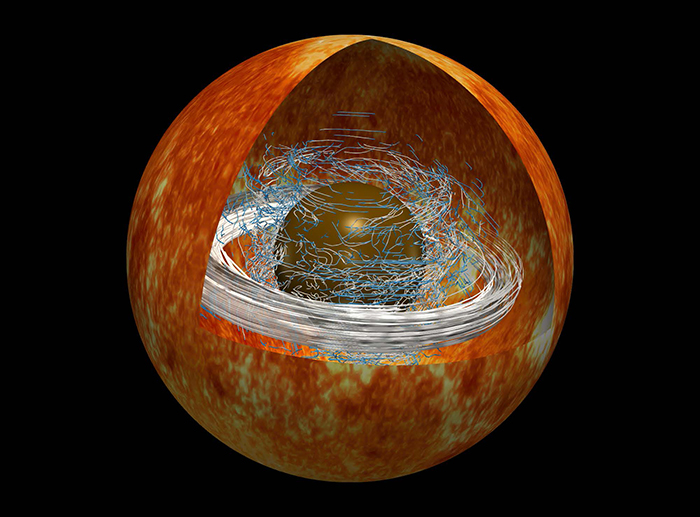Under certain conditions, the core of stars contracts. And when this happens, it starts to rotate faster than the outer layers of the star. But the study of the vibrations of stars, asteroseismology, has uncovered a surprising phenomenon : the core of these stars finally rotates more slowly than calculations predict. Why ?

Three French scientists[[This research was conducted at the Laboratoire d’étude du rayonnement et de la matière en astrophysique et atmosphères (Observatoire de Paris - PSL/CNRS/CY Cergy Paris Université/Sorbonne Université), the Laboratoire Jean-Alexandre Dieudonné (CNRS/Université Côte d’Azur/Inria), and the Laboratoire de physique de l’ENS (CNRS/ENS-PSL/Sorbonne Université/Université Paris Cité).] CNRS, Inria and ENS-PSL have studied this question and report their results in an article published in Science on January 20, 2023.
Their numerical simulations that model the flow of plasma in the deep layers of a star have shown that this slowing of the core can be produced by an internal magnetic field. More precisely, the plasma flow can amplify a magnetic field until it generates strong turbulent motions. These turbulences could further amplify the magnetic field until it causes a slowing down of the core of the star.
The results obtained with the simulations of the research team are in agreement with the asteroseismological observations of many stars. The simulations also show that this magnetic field would be occulted by the outer layers of the star, which explains why no such magnetic field has yet been measured with current techniques.
__________________________________
